Trustindex verifies that the original source of the review is Google. I contacted radiant solutions company through their contact us tab on the website. Matt answered my email very promptly. I had a few more questions so I sent him another email and he called me right back by phone instead of chatting back-and-forth n email. He took the time to answer all my questions and give me inside tips on installation. I highly recommend them and I highly recommend Matt as a sales / customer service representative.Posted onTrustindex verifies that the original source of the review is Google. We are so pleased with the service and product from this company. The self regulating pipe heating cables that we have purchased have kept our pipes in our RV from freezing and running smoothly in this super cold winter. They have been easy to install and monitor. I would highly recommend ALL of the products from this company.Posted onTrustindex verifies that the original source of the review is Google. I've worked with these guys a few times now and they've been super helpful every time and are great to work with!Posted onTrustindex verifies that the original source of the review is Google. Amazing products and the best customer service! Have used them for a while and will continue to do so. This company is great to work with.Posted onTrustindex verifies that the original source of the review is Google. This is a fantastic company with well thought out and high-quality products. The 'kits' for cable ends, tees and terminals are complete and easy to install. All instructions are complete and excellent support is available. The paper installation manual is a complete planning and installation guide. Company support is first rate. Highly recommended vendor.Posted onTrustindex verifies that the original source of the review is Google. Excellent products from an outstanding company. Very glad everything is American made and it shows! I contacted the company twice before ordering and I received an answer within the hour. Shipping was vey fast since I ordered on Friday and was delivered on Monday! The 10 year warranty is superior and instructions are clear. There is not another heat cable on the market that even come close to these guys.Posted onTrustindex verifies that the original source of the review is Google. Great installation of heat tape on two roof sections. Installer showed up on time, did a professional job, and checked that it worked.Posted onTrustindex verifies that the original source of the review is Google. As an installer of Heat Tape on homes, Radiant Solutions provides super high quality heat cable. It’s a mix of ease of installation and some of the best customer support that makes this above and beyond expectations. The waves this cable creates in rooflines is very satisfying to install and look at. Grip Clips are the best and strongest way to securely mount it to the roofline.Posted on
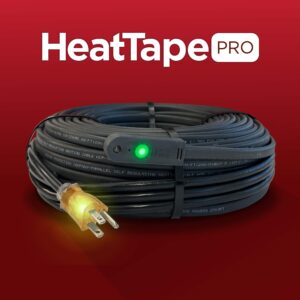
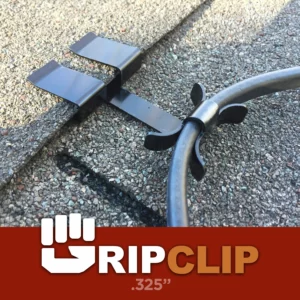



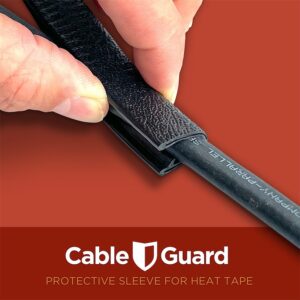
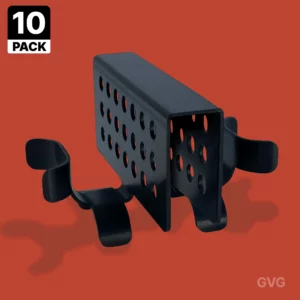
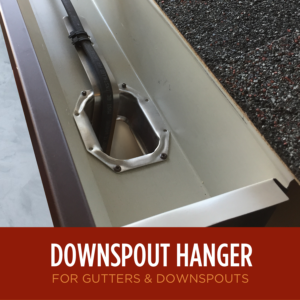
Heat Tape purchased in big-box stores is most often constant wattage heat tape. “Constant Wattage” means: it’s always on. It is always drawing full power and is costing you peak energy expenses, which –over the length of a season can add up huge. Thought you were saving money on that heat tape you got at that home improvement store? Guess again.
Radiant Solutions’ Heat Tape PRO™ heating cable is Self-Regulating. This means, as the temperature gets colder, the cable creates more heat by drawing more power and when it gets warmer it creates less heat by drawing less power. This allows you to consume only the energy you need to help protect your home from damage caused by the ice and cold.
The core of our ice dam heat tape is comprised of two bus wires encased in a material that is infused with carbon. As ambient temperatures decrease, the core material shrinks pulling the bus wires closer to each other, creating more electrical pathways through the carbon which makes the cables heat up. When ambient temperatures get warmer, the inner core expands and the cable demands less energy and creates less heat.
No, not really. Because any control or switch is still going to tell your constant wattage cable to be either off or on at 100% power. It is very binary. Conversely, Self-regulating Heat Tape will output variable temperatures based on the external, ambient temperature. So when it’s 31ºF or 10ºF constant wattage heat tape will always be on full heat, where self-regulating heat tape will only use just enough power to be at the temperature you need to prevent ice dams on the roof or frozen pipes around your property.
Among other things, constant wattage heat cable cannot be overlapped without creating risk of over heating or shorting out. It cannot be used under 15°F, it cannot be used on wood roofs, rubber roofs, metal roofs, or anything other than asphalt shingle roofs. You must clean combustibles such as leaves away from constant wattage cable throughout the operating season. The warranty on most constant wattage heat cable systems is no more than two years. Lastly, unlike self-regulating heat cable systems, constant wattage heat cables cannot be repaired in the field if they are damaged. One knick in the jacketing, and the cable is done.
Once it turns on, the self-regulating aspect takes over and directs heat to the area(s) of the cable that are in contact with the cold. The thermostat should be positioned outside of the insulating layer so it can effectively read the temperature of the air.
Yes. When the Heat Tape is plugged into a working outlet the plug will light up.
Note:
If you are using a Thermostatic switch like the ThermaCord with Heat Tape Pro, the plug on your heat tape will only be lit up when the ambient temperature is low enough and your ThermaCord has switched on power to your Heat tape. (for Pipe Freeze Pro, the thermostatic switch is integrated and comes after the plug, so your plug should be illuminated)
Heat Tape Pro and Pipe Freeze Pro are offered in many lengths from 6-foot up to 150-foot. These products are not designed to be modified, so you should pick the length you need and work with that length. These cables should not be altered and doing so would void any warranty on the product.
We offer heat tape on spools from 250-foot to 1000-foot. These spools are designed to be cut to length, made into multiple cables, etc. Heat Tape on spools needs to be hard-wired into a junction box, or have a power connection plug-in manually added to it for use. It also requires ends to be properly sealed and terminated. When working with Heat Tape on spools, a Licensed Electrician should be utilized to assure proper wiring per regional codes and standards.
Pipe Freeze Pro’s integrated thermostat turns power on and off automatically to the cable to save electricity. The thermostat is the lump located between the power cord and the heat cable. The thermostat triggers the cable to turn on at 37ºF and off at 50ºF, with a sensitivity range of +/- 4ºF. It’s a great feature that makes Pipe Freeze Pro unique among heat cables on the market.
Yes and no. The cable is approved for exposure to wet conditions but you should keep the thermostat dry for proper operation.
No. The thermostat need only be exposed to cold air. It does not hurt to have the thermostat attached to the pipe but it is not necessary. If you choose to attach it to the pipe keep in mind that the thermostat should not be covered with insulation.
No. You want the thermostat to react to the cold environment so it triggers the Pipe Freeze Pro to turn on.
Heat Tape Pro has the most comprehensive installation system that works on almost any kind of roof type.
For information about installing Heat Tape Pro on a Natural Slate Roof, Click here.
For information about installing Heat Tape Pro on a Synthetic late Roof, Click here.
Radiant Solutions has the most comprehensive installation system for Heat Tape that exists. We make accessories to install heat tape on almost any kind of roof.
Click here to learn about product specifically for Natural Cedar Roofs
Heat Tape Pro is rated for wet locations and outdoor environments. It is ideally suited for outdoor pipes and can be installed in open drains, such as 4″ PVC pipes for gutter system drainage.
Do not use Pipe Freeze Pro for wet location pipe freeze protection.